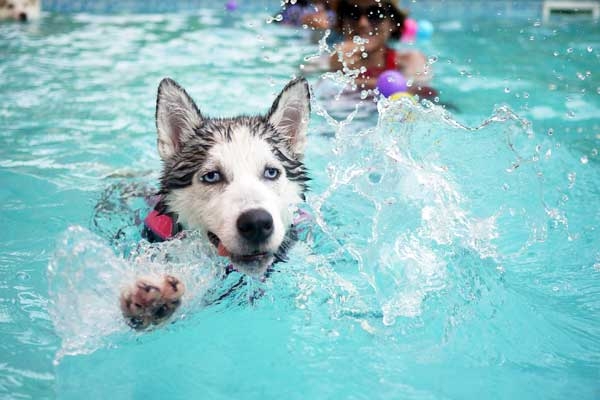
(Image source from: Canva.com)
If you're tired of walking around the same block, take your dog on a new adventure! Swimming is a fun and effective way to exercise and stimulate your furry friend. Swimming is proven to be the best form of exercise for dogs of all breeds and ages. A great low-impact option that provides a full-body, low-impact workout and is great for building strength, endurance and flexibility without putting strain on joints, especially in older or injured dogs. Swimming is a great option for dogs with arthritis or joint problems. The buoyancy of the water supports your weight, relieving pressure on your joints while allowing you to move smoothly. Improves mobility, flexibility, strength and reduces discomfort associated with arthritis. For older dogs, swimming minimizes the risk of arthritis pain and also helps maintain flexibility while being less stressful and gentler exercise than walking or jogging. The benefits are extensive, including joint support, improved blood circulation and increased muscle strength.
This gentle exercise is ideal for helping your dog lose weight. You can do your workout in a relaxed manner, working multiple muscle groups to strengthen your heart and improve blood circulation. Regular swimming improves your endurance, lung capacity and overall heart health, making it great for fitness and rehabilitation. It also helps reduce stress and anxiety. The rhythmic movements and the beneficial effects of the water have a calming effect. For dogs with separation anxiety or stress-related issues, swimming can serve as both physical exercise and mental relaxation. Swimming is more than just a physical activity for dogs. If done right, you can create lasting memories and strengthen your bond with each other. These interactions also serve as mental stimulation for your dog and help him enjoy his time outdoors.
Getting your furry friend used to the water starts slowly. As with practice, gradually move into shallower water until you get used to the feel. Use positive reinforcement like treats and praise to create a positive experience. Always supervise your dog closely and avoid deep water until he can swim safely. The frequency of this swimming routine depends on your dog's age, fitness and health status. Two to three times a week is ideal for most dogs. Older or recovering dogs benefit from shorter, more frequent swimming sessions, while younger, healthier dogs can enjoy longer, more regular swimming sessions. However, caution should be exercised when swimming as there are risks of drowning, ear infections and fatigue. To avoid such illnesses, make sure your dog swims in clean water to avoid infections. Always take care of them and keep their ears dry and covered after swimming. Avoid excessive training with your dog, especially if you have a puppy or an older dog with health problems.







